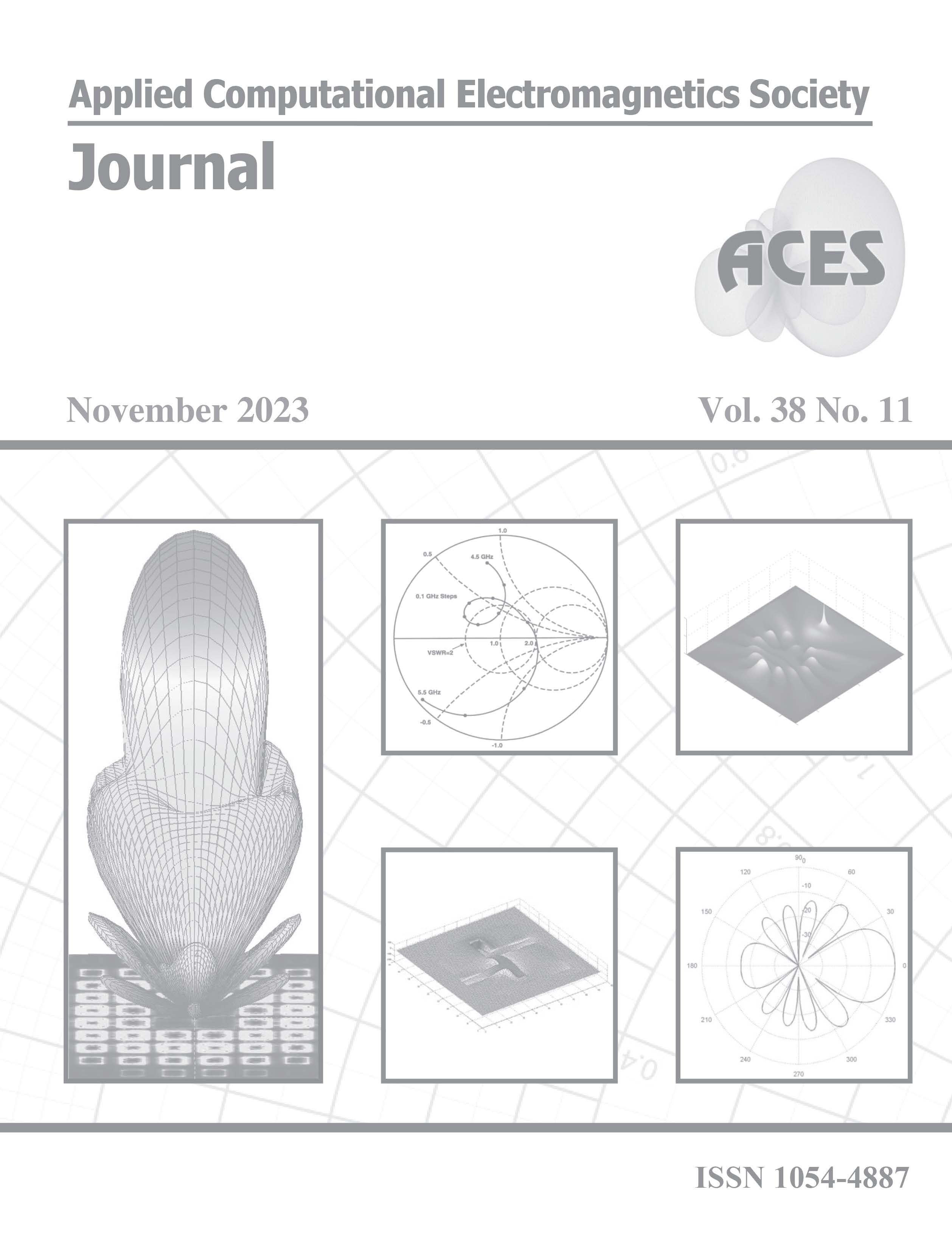Fractal Interpolation Function based Thin Wire Antennas
DOI:
https://doi.org/10.13052/2023.ACES.J.381104Keywords:
Fractal antenna, fractal interpolation functions, iterated function systemsAbstract
This paper presents an approach for the design of wire antennas based on fractal interpolation functions (FIFs). The interpolation points and the contraction factors of the FIFs are chosen as free parameters to modify the antenna geometry. The proposed structures’ gain and radiation pattern can be optimized using FIF parameters. Producible prefractal antennas obtained in the intermediate iterations of fractal generation have compact sizes compared to classical counterparts. The error in prefractal geometry and the original fractal is bounded, and can be determined in terms of the finest producible detail’s dimensions. The emerging structures have multiband behavior due to their self-similar and symmetric nature. To illustrate the approach, we have provided finite element based simulations for several prefractal antennas. |S11|, the gain, the radiation efficiency, the radiation patterns, and feed point impedances for the demonstrated antennas are calculated numerically. The results indicate that produced antennas can be used in applications that require limited mechanical size, multiple operating bands, and controlled radiation patterns.
Downloads
References
B. B. Mandelbrot, The Fractal Geometry of Nature, vol. 1, WH Freeman New York, 1982.
D. H. Werner and S. Ganguly, “An overview of fractal antenna engineering research,” IEEE Antennas and Propagation Magazine, vol. 45, no. 1, pp. 38-57, 2003.
W. J. Krzysztofik, “Fractal geometry in electromagnetics applications from antenna to metamaterials,” Microwave Review, vol. 19, no. 2, 2013.
N. Sharma and V. Sharma, “A journey of antenna from dipole to fractal: A review,” J. Eng. Tech., vol. 6, no. 2, pp. 317-351, 2017.
P. Prabhu and S. Malarvizhi, “Compact dual-band hybrid-fractal MIMO system for UMTS and LTE mobile applications,” Applied Computational Electromagnetics Society (ACES) Journal, pp. 135-140, 2019.
D. H. Werner, R. L. Haupt, and P. L. Werner, “Fractal antenna engineering: The theory and design of fractal antenna arrays,” IEEE Antennas and Propagation Magazine, vol. 41, no. 5, pp. 37-58,1999.
D. Werner and P. Werner, “Frequency-independent features of self-similar fractal antennas,” Radio Science, vol. 31, no. 6, pp. 1331-1343, 1996.
J. Anguera, C. Puente, C. Borja, and J. Soler, “Fractal shaped antennas: A review,” Encyclopedia of RF and Microwave Engineering, 2005.
H. Sagan, Space-filling Curves, Springer Science & Business Media, 2012.
A. Ismahayati, P. J. Soh, R. Hadibah, and G. Vandenbosch, “Design and analysis of a multiband koch fractal monopole antenna,” in 2011 IEEE International RF & Microwave Conference, pp. 58-62, IEEE, 2011.
C. P. Baliarda, J. Romeu, and A. Cardama, “The Koch monopole: A small fractal antenna,” IEEE Trans. on Antennas and Propagation, vol. 48, no. 11, pp. 1773-1781, 2000.
C. Puente-Baliarda, J. Romeu, R. Pous, and A. Cardama, “On the behavior of the Sierpinski multiband fractal antenna,” IEEE Trans. on Antennas and Propagation, vol. 46, no. 4, pp. 517-524, 1998.
A. Bhattacharya, B. Roy, S. K. Chowdhury, and A. K. Bhattacharjee, “Design and analysis of a Koch snowflake fractal monopole antenna for wideband communication,” Applied Computational Electromagnetics Society (ACES) Journal, pp. 548-554, 2017.
P. Chowdary, A. M. Prasad, P. M. Rao, and J. Anguera, “Design and performance study of Sierpinski fractal based patch antennas for multiband and miniaturization characteristics,” Wireless Personal Communications, vol. 83, no. 3, pp. 1713-1730, 2015.
K. Vinoy, K. Jose, V. Varadan, and V. Varadan, “Hilbert curve fractal antenna: A small resonant antenna for VHF/UHF applications,” Microwave and Optical Technology Letters, vol. 29, no. 4, pp. 215-219, 2001.
J. Anguera, A. Andújar, J. Jayasinghe, V. V. S. S. S. Chakravarthy, P. S. R. Chowdary, J. L. Pijoan, T. Ali, and C. Cattani, “Fractal antennas: An historical perspective,” Fractal and Fractional, vol. 4, no. 1, 2020.
A. Karmakar, “Fractal antennas and arrays: A review and recent developments,” Int. J. of Microwave and Wireless Tech., vol. 13, no. 2, pp. 173-197, Mar. 2021.
H. Oraizi and S. Hedayati, “Miniaturized UWB monopole microstrip antenna design by the combination of Giusepe Peano and Sierpinski carpet fractals,” IEEE Antennas and Wireless Propagation Letters, vol. 10, pp. 67-70, 2011.
D. H. Werner, P. L. Werner, and K. Church, “Genetically engineered multiband fractal antennas,” Electronics Letters, vol. 37, no. 19, pp. 1150-1151, 2001.
K. Vinoy, K. Jose, V. Varadan, and V. Varadan, “Resonant frequency of Hilbert curve fractal antennas,” in IEEE Antennas and Propagation Society Int. Symp. 2001 Digest. Held in conjunction with: USNC/URSI National Radio Science Meeting (Cat. No. 01CH37229), vol. 3, pp. 648-651, IEEE, 2001.
K. Vinoy, J. K. Abraham, and V. K. Varadan, “On the relationship between fractal dimension and the performance of multi-resonant dipole antennas using Koch curves,” IEEE Trans. on Antennas and Propagation, vol. 51, no. 9, pp. 2296-2303, 2003.
M. F. Barnsley, Fractals Everywhere, Academic Press, 2014.
M. F. Barnsley, “Fractal functions and interpolation,” Constructive Approximation, vol. 2, no. 1, pp. 303-329, 1986.
M. A. Navascués, A. K. B. Chand, V. P. Veedu, and M. V. Sebastián, “Fractal interpolation functions: A short survey,” Applied Mathematics, vol. 2014, 2014.
J. Bezanson, A. Edelman, S. Karpinski, and V. B. Shah, “Julia: A fresh approach to numerical computing,” SIAM Review, vol. 59, no. 1, pp. 65-98, 2017.




